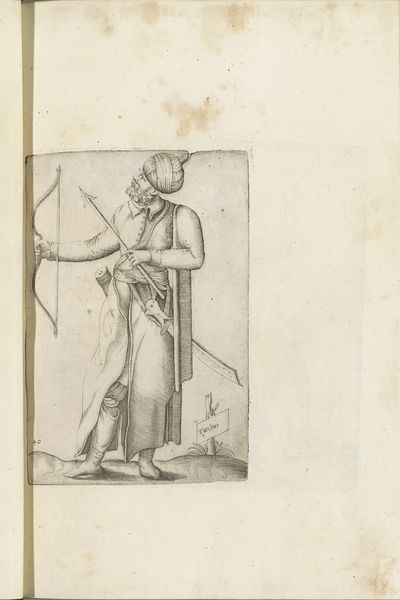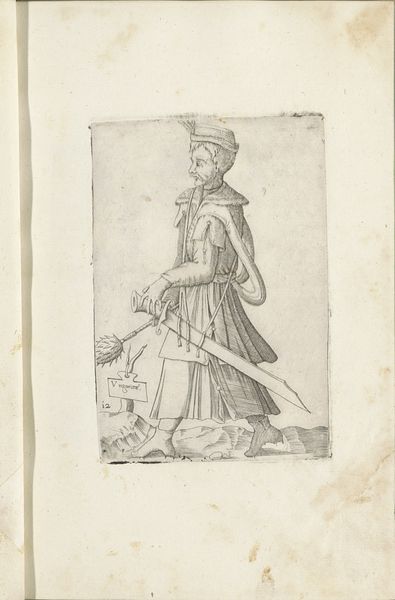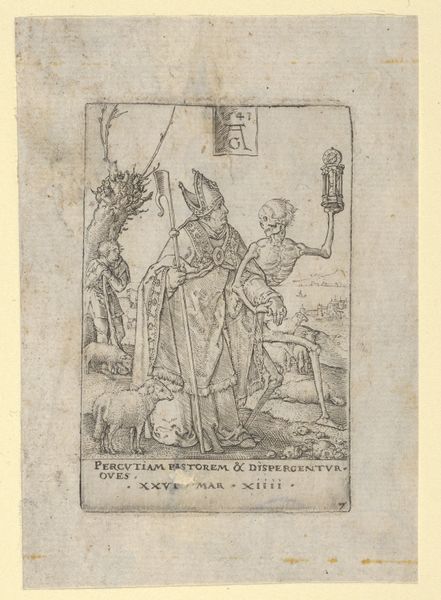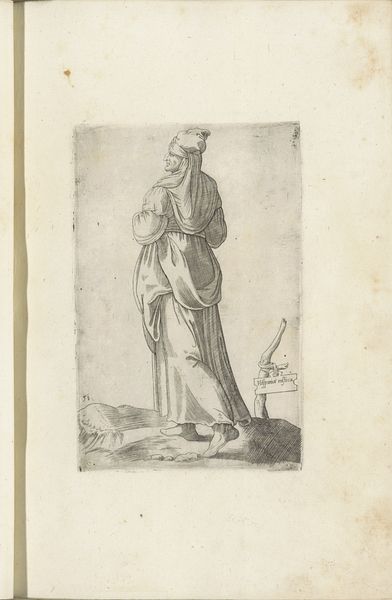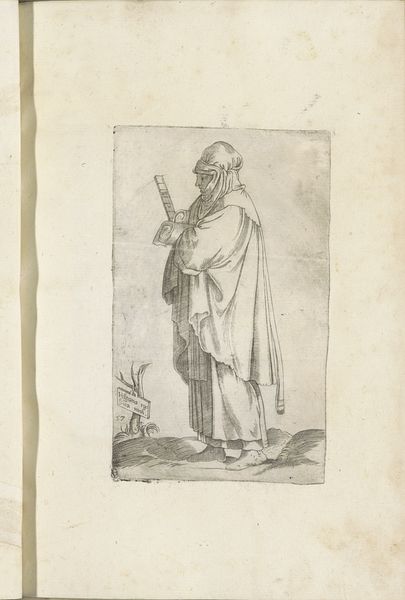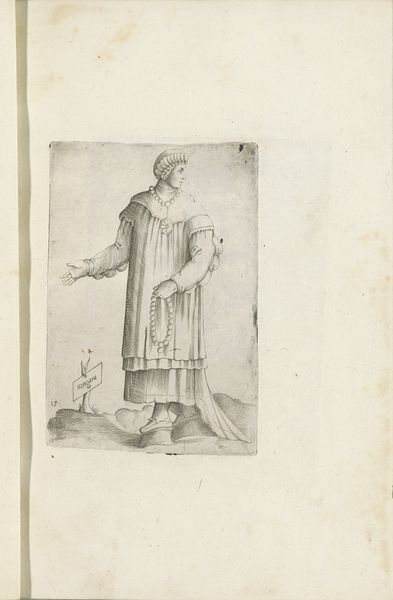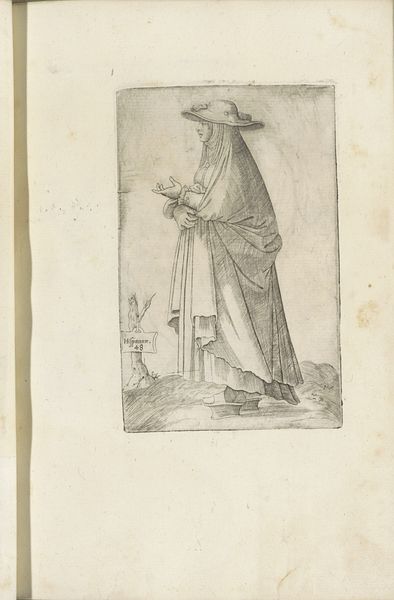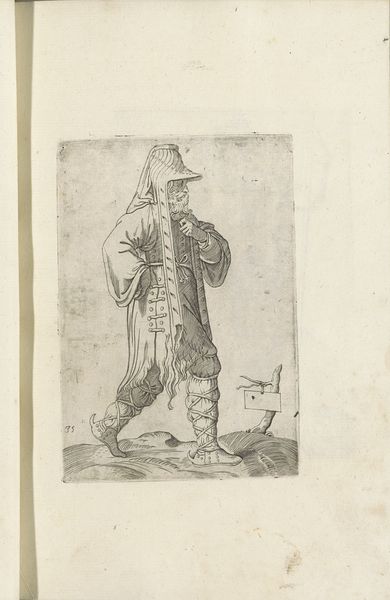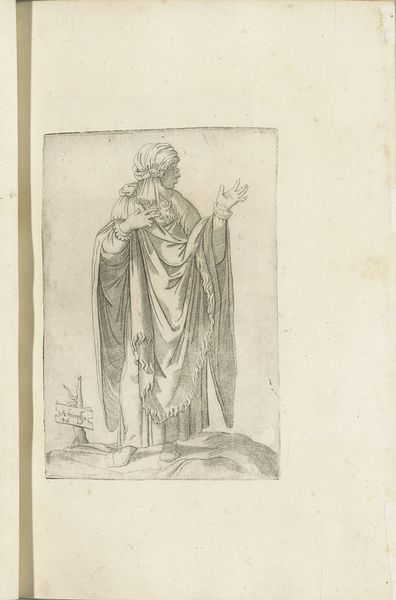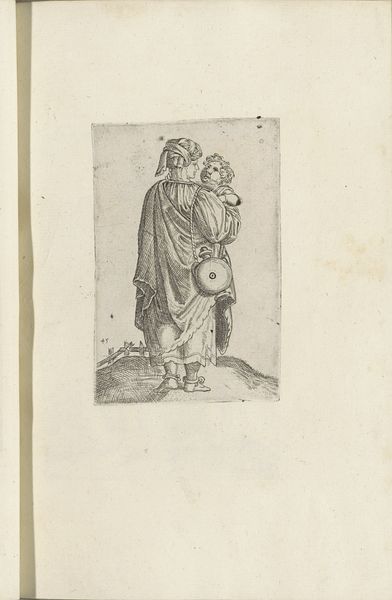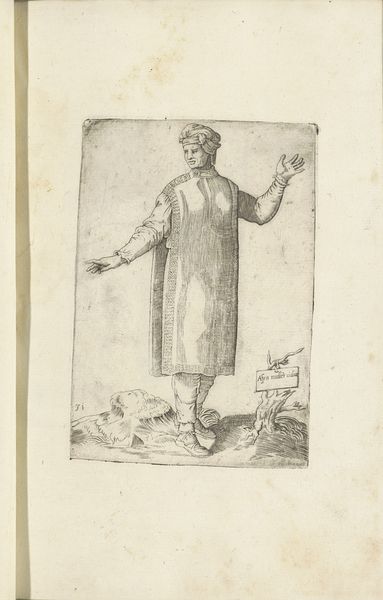
drawing, paper, ink, pencil
#
portrait
#
drawing
#
mannerism
#
figuration
#
paper
#
form
#
ink
#
pencil
#
line
#
genre-painting
#
academic-art
#
italian-renaissance
Dimensions: height 265 mm, width 195 mm, height 150 mm, width 105 mm
Copyright: Rijks Museum: Open Domain
Editor: This is "Arabische Vrouw," a drawing made with pencil, ink, and paper by Ferando Bertelli in 1569. The stark contrast between the standing figure and the subservient one sitting has an odd balance to it, and it’s this tension I find most engaging. How do you interpret this work? Curator: It’s a powerful piece, isn't it? Looking at this drawing, I’m immediately drawn to the construction of identity and power. The term “Arabische Vrouw” itself needs interrogation. What did that term signify in 16th-century Europe? What assumptions and biases were embedded within it? Consider, for example, the contrast you mentioned: Who is this woman being elevated above, and what social structures legitimized such hierarchies? Editor: I see what you mean. So, the drawing isn't just a portrait, it's about the relationship between cultures and social positions at that time? Curator: Precisely! Think about how dress functions here. Her clothing, while intended to identify her ethnicity, might also reveal anxieties surrounding cultural difference. Is it an attempt to understand, or otherize? Consider the concept of Orientalism. How might that play a role here, even centuries before Said formalized the term? How is the otherness depicted here? Is this representation of an "Arabische Vrouw" serving specific socio-political agendas? Editor: That's fascinating. I hadn't considered that the clothing could represent anxiety rather than simple observation. Curator: This work invites us to question how representation, particularly of marginalized communities, has historically been used to reinforce existing power dynamics. We must challenge these established frameworks. This image isn't merely a window to the past; it's a reflection of enduring questions about representation and social justice. Editor: Thank you! Looking at the drawing now, I am so much more aware of its social context and loaded gaze. Curator: It's vital that we bring that awareness into discussions about contemporary art, to ensure inclusivity and respect for diverse voices.
Comments
No comments
Be the first to comment and join the conversation on the ultimate creative platform.
